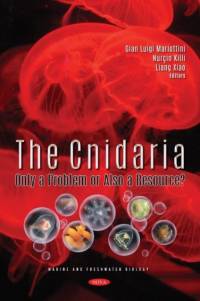Om The Cnidaria
Cnidarians are elegant and dazzling aquatic organisms, but despite their beauty they are known to be a threat in many coastal areas around the world. Several species of cnidaria living in tropical or sub-tropical areas are remarkably dangerous, but many Mediterranean species can also cause serious health problems. Really, cnidarians (sea anemones, corals, medusae) are considered among the most dangerous and venomous organisms, thanks to the occurrence in their tissues of batteries of intracellular capsules (nematocysts or cnidocysts) produced by the Golgi apparatus of specialized cells (nematocytes or cnidocytes) from which the phylum Cnidaria takes the name (from the Greek κνίδη = nettle). The consequences of human encounters with cnidarians vary widely, from simple skin irritation to serious anaphylactic manifestations in sensitive subjects. During the last few decades, cnidarians have been perceived as increasingly dangerous due to recurrent jellyfish outbreaks which constitute a threat both for human health and economy and for the environmental equilibrium. In addition, the occurrence of alien species, whose spread is facilitated by human activities, environmental changes, global warming, or man-made modifications of the natural features of territories, pose new and serious challenges to environmental management. For all these reasons, cnidarians can be viewed as a problem. Nevertheless, cnidarians are also viewed with particular interest due to their potential in the field of natural products. Scientists have realized the potential of natural resources hidden in aquatic environments for the development of new drugs or bioactive substances with wide potential use. At present, an enormous scientific literature is available about the value of cnidarian products as potential therapeutic agents, in human nutrition, or for other applications. As such, these organisms can also be reasonably considered a resource. Taking into consideration these two main aspects, this book aims to collect the experiences and recent research data on cnidarians and review present knowledge on the subjects.
Visa mer

